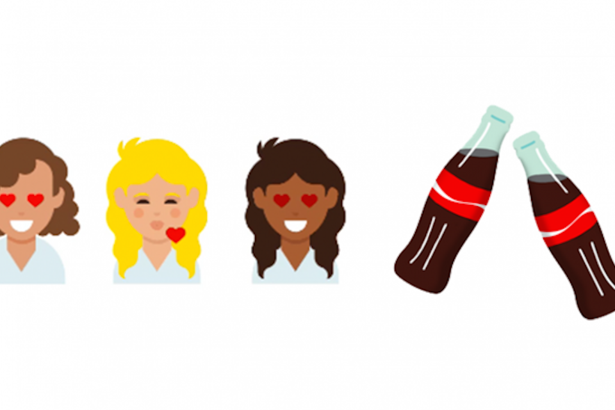
Super Bowl 50—the game, this year, has reverted back to Arabic numerals to avoid the assorted awkwardnesses of the name “Super Bowl L”—will likely bring many of the things you’d expect from it. Clydesdales that restore your faith in humanity. Celebrity cameos that restore your nostalgia for mid-’90s TV sitcoms. Beer ads that restore your faith in beer. Oh, definitely, there will be a football game included among all the pageantry—spread out, dependably, like the beany bottom of a seven-layer dip—but what will make this bowl really Super, for most viewers, is the same that makes it Super every year: the ads. The weep-worthy stories of adversity overcome, the bikini-clad models sloppy-eating bacon cheeseburgers, the tiny tales of American culture told in 30-second snippets.
Some of this spectacle, though—this year as in other years—will take place online. People will do what they long have done (mocking the ads, hoping for a halftime wardrobe malfunction, getting pissed at GoDaddy) on Facebook and Snapchat and WhatsApp and Twitter. And the brands will do, for their part, what they have long done: finding the people where they are and then trying to sell things to them. This year, that means a couple of things. Promoted hashtags. Promoted trends. And, on Twitter, the latest innovation: custom emojis.
Twitter, for Super Bowl 50, is partnering with brands like Pepsi and Anheuser-Busch and Verizon to offer emojis with a Super Bowl theme. And the company is charging, AdWeek reports, a “seven-figure” fee for its services.
Call them “Cashmoji,” as TechCrunch’s Drew Olanoff suggests, or, even better, “admoji.” (Just please don’t call them “hashflags,” which is what the #brands have tried to #brand them.) The emoji work, generally, like this: If you tweet a hashtag of a particular brand’s ad campaign—think “#LoveYourCurls” from Dove, or #RedCups from Starbucks—a Dove- or Starbucks-branded emoji will pop up along with your hashtag. (Or, in the case of the new Super Bowl emoji: Budweiser’s #GiveADamn tag, tied to its responsible-drinking campaign, results in a hand relinquishing car keys. Pepsi’s #PepsiHalftime yields a soda can bubbling with both carbonation and music notes.)
So: hashtags that produce images, via the crazy alchemy of the social Internet! You will be, the thinking goes, surprised and/or delighted at this turn of events.
Perhaps you will be. The emojis Twitter has so far designed for its clients (a curly-haired woman for Dove, a cup of coffee for Starbucks) are fun little additions to hashtagged messages. Which, after all, Twitter users are using voluntarily. (If, occasionally, ironically.) The first experiment Twitter conducted with the emojis—for Coke’s #ShareACoke campaign this October—resulted in more than 170,000 appearances of the merrily clinking Coke bottles Twitter had designed for the occasion circulating around the Internet. And, since that initial campaign, Twitter has designed 16 others that involved custom emojis—for brands and events from Dove to Subway to Starbucks to Star Wars to the VMAs to the Vatican.
The emojis are on the one hand a nice little revenue stream for a company that has been struggling financially. (The “seven-figure” price tag for the emojis, AdWeek notes, likely involves packages that combine the custom emoji with Promoted Trends—which normally cost $200,000 on their own—and/or Promoted Moments, and/or Promoted Tweets.) What the emoji are more broadly, though, are suggestions of the new interactivity ads will likely adopt as the web settles from “technological innovation” to “cultural infrastructure.” The advertisers here aren’t paying seven figures for tiny images of beverages and Storm Troopers; what they’re paying for, really, is the cachet of newness and hipness. They’re paying for the ability—the potential—to surprise and amuse and delight people. They’re paying for what advertisers are always trying to purchase, in the end: fickle human attention.
The cost of all this custom emoji-ing comes, notably, at roughly the same price point as a standard TV Super Bowl ad. (A 30-second spot during the airing of Super Bowl 50 will likely cost as much as $5 million.) Which is to say that advertisers—the big ones, the ones who can afford it—are roughly as happy to pay for newfangled digital gimmicks as they are for tried-and-true methods of reaching consumers. They’re roughly as happy to pay for distributed attention as they are for concentrated. Network executives and Hollywood studio heads have long been contending with the Internet; advertisers are doing the same thing. The spectacle of the Super Bowl is just as spectacular as it’s always been—maybe even more so—but the platforms for all the pageantry are expanding. One Budweiser-sponsored emoji at a time.